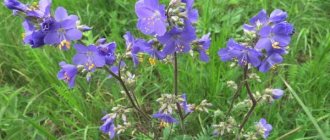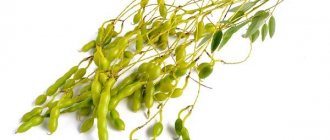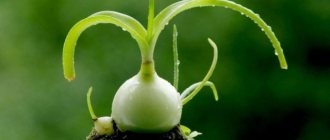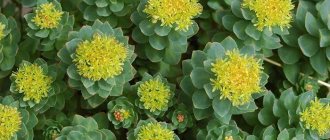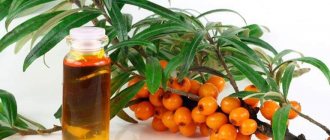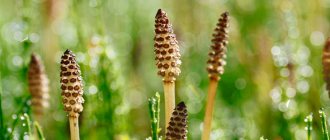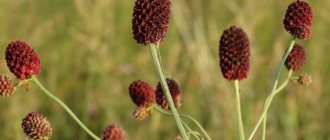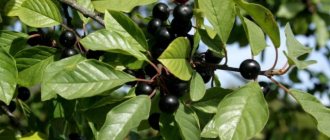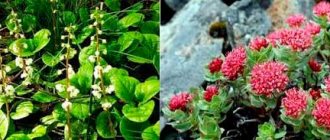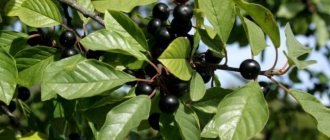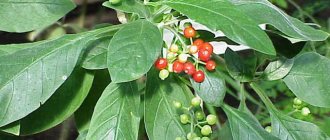The body of women is especially sensitive to hormonal changes, so the healing properties of the red brush for women lie in the effect of the herb on the endocrine system.
The plant is most effective in the fight against pathologies of the thyroid and adrenal glands, as well as in the case of gynecological diseases associated with hormones.
Taking medications based on the medicinal root stabilizes the menstrual cycle, reduces the intensity of bleeding during menstruation, and increases a person’s defenses.
The elements contained in Rhodiola cold or four-membered (the second name of the plant) stimulate the entire body, have anti-inflammatory, oncoprotective and adaptogenic properties.
The main array of useful components is found in the root of the herb, which is why it is most often used to treat diseases.
To treat various pathologies, the medicinal plant should be taken according to different regimens, therefore, before using Rhodiola quadruple, you should consult a specialist for diagnosis and advice on treatment methods.
Morphological description
In appearance, Rhodiola resembles a spherical pillow.
Multi-headed wide rhizomes below turn into a woody, vertical root. The bottom of the stem and the top of the root form a caudex - a woody, powerful rod, which is covered on top with the remains of last year's stems. The cut root has a pleasant aroma, similar to the smell of roses.
The stems are erect or curved, unbranched, thin, extend straight from the rhizome and are surrounded by last year's leaves of a reddish hue, which formed the basis of the name. The leaves are alternate, twisted, entire, flat, triangular or semicircular in shape and brown or brownish in color. They are located close to each other and are up to 8 cm long; they fall off very easily.
Flowers of yellow or yellow-green color are collected in terminal corymbose, racemose or capitate-corymbose inflorescences of 3-5 flowers, mostly dioecious. The perianth is fused at the very base and has a dark red or yellowish-red color. The fruit is a straight leaflet with a short spout. The seeds are small and numerous.
Flowering occurs in June-July.
Chemical composition
The following beneficial substances were found in red brush:
- essential oil that has bactericidal, soothing, antiseptic, anti-inflammatory, immunomodulatory, analgesic, wound-healing effects;
- anthraglycosides, which improve the peristalsis of the large intestine and have a laxative effect;
- organic acids that take part in the process of hematopoiesis, which are a source of iron, potassium, magnesium, which improve the functioning of the gastrointestinal tract. Have a positive effect on the condition of the vascular wall, optimize metabolism, reduce blood cholesterol, neutralize and remove toxins and free radicals, strengthen the immune system;
- sterols that normalize blood cholesterol levels, increase the body’s protective reserves and prevent the development of autoimmune reactions;
- phenols, which strengthen blood vessels and prevent their narrowing. Prevents cholesterol deposition;
- flavonoids that reduce vascular permeability, normalize blood pressure and heart rate, eliminate inflammation and stimulate the activity of the adrenal cortex;
- phytohormones that regulate the balance of hormones in the human body, lower blood pressure, activate tissue regeneration, and restore the function of the reproductive and nervous systems. Have a preventive effect against malignant neoplasms;
- glycosides, in particular salidroside, which has an antifungal, antibacterial effect, and has an oncoprotective and adaptogenic effect. It also helps eliminate endocrine disruptions in gynecological diseases and pathologies of the adrenal glands and thyroid gland;
- waxes that accelerate the healing process of skin damage and have astringent and bactericidal properties;
- tannins characterized by anti-inflammatory, wound-healing, bactericidal, bacteriostatic and astringent effects;
- betaines, which protect the body during stressful situations, have a positive effect on the liver and joints;
- anthocyanins, which have antibacterial, antiviral and antifungal effects;
- elements: manganese, chromium, cobalt, selenium, gum, zinc, silver, copper, nickel, molybdenum and vitamin C, which together have an immunostimulating, strengthening, regenerating effect, as well as an antioxidant effect;
- There are also a number of substances necessary for the life of the plant, such as fats, proteins, sugars, etc.
About the plant
Red brush, also known as Rhodiola tetrapetalum and Rhodiola colda, is a perennial herbaceous plant belonging to the genus Rhodiola and the Crassulaceae family.
It grows mainly in the mountainous regions of Altai, Siberia, as well as in Tuva, Buryatia and Yakutia. According to botanists, it is precisely thanks to the ability to “survive” in difficult mountain conditions that the red brush has acquired a number of truly valuable medicinal properties.
Included in the Red Book: Republics of Altai and Sakha; Transbaikal region; Irkutsk, Magadan and Sverdlovsk regions. The plant received its popular name, “Red Brush,” for its characteristic flower shape, reminiscent of a red brush.
Useful properties of the red brush
One of the most unique properties of the plant is its ability to trigger reserves of protective forces and mobilize the human body to fight the disease, which allows eliminating the cause of the pathology.
Increasing the body's energy potential allows the plant to be effectively used in the treatment of chronic fatigue, vitamin deficiency and seasonal depression. Mild tonic, adaptogenic effects and a destructive effect on pathogenic microflora help in the treatment of diseases of viral and bacterial etiology.
The plant is characterized by the following positive effects:
- normalization of hormonal levels and functioning of the endocrine system;
- acceleration of tissue healing, including bone;
- blood pressure stabilization;
- normalization of the central nervous system, calming effect;
- cleansing the body and blood from toxins and free radicals;
- normalization of the blood count;
- elimination of inflammatory reactions;
- lowering cholesterol levels;
- elimination of pain syndrome;
- anticarcinogenic, oncoprotective effect;
- prevention and elimination of cerebral vascular spasms;
- increased physical and mental reserves;
- increase in blood hemoglobin;
- improving resistance to infectious agents, activating the body's defenses;
- rejuvenation of the body.
Indications for use
- Diseases of the cardiovascular system, blood and lymphatic system: atherosclerosis, anemia, increased intracranial pressure, diseases of the lymph nodes, leukemia, heart disease;
- In gynecology: mastopathy, uterine fibroids and fibroids, cystosis and polycystic disease, painful and very heavy menstruation, dys- and amenorrhea, menstrual cycle failure, uterine bleeding, cervical erosion, endometriosis, adnexitis, infertility, endometrial and cervical polyps, menopausal syndrome ;
- Diseases of the male reproductive system: infertility, oligospermia, prostatitis, prostate adenoma, weakened potency;
- Diseases of the urinary system: cystitis, pyelonephritis;
- Endocrinological pathologies: hypothyroidism, hormonal disorders, thyroiditis, goiter, diabetes mellitus;
- Diseases of the digestive system: dysbiosis;
- Neurological pathologies: neuroses, epilepsy, concussion;
- ENT pathologies: sinusitis;
- Bone fractures;
- Infectious diseases: a broad group of pathologies caused by bacteria, viruses or fungi.
- Oncological diseases: as treatment and prevention of oncology. The oncoprotective properties were studied by Polish scientists in experimental work on mice, during which an alcoholic infusion of red brush turned out to be effective against tumor cells.
The plant is a natural phytohormone, so it can act as a safe and natural option for hormone replacement therapy, traditionally provided by synthetic hormonal drugs. Artificially synthesized hormones can disrupt the natural production of one’s own hormones, making a person dependent on drugs forever. Phytohormones do not have such serious side effects as, for example, the risk of developing vascular thrombosis, which is characteristic of synthetic drugs.
The adaptogenic and immunomodulatory properties of red brush allow the female body to develop resistance to adverse environmental factors, prevent the development of diseases and mobilize protective barriers. Therefore, plant preparations are recommended when planning pregnancy for the prevention of benign formations, inflammation, and hormone imbalance.
Also, plant preparations are indicated for activating the immune system, recovery after protracted illnesses, operations, and as universal means for rejuvenating the body.
Rhodiola for the male body
Don’t be surprised, but the medicinal herb is also useful for men. Indications for the use of products with a red brush in the stronger sex are:
- prostatitis. The drugs can eliminate inflammation, stop the growth of pathogenic bacteria, activate immune defense and urinary function. It is useful to take alcohol tincture and decoction;
- BPH. Rhodiola regulates the ratio of sex hormones, the imbalance of which is the main cause of the disease. It also eliminates pain when urinating, prevents urinary incontinence, and stops the inflammatory process. For treatment, tincture and decoction are used;
- male infertility. The red brush increases sperm activity and the quality of seminal fluid, removes inflammation, and improves the functioning of the genitourinary system.
The methods for preparing alcohol tincture and decoction do not differ from the recipes described above.
Contraindications for taking the plant by men are identical to the recommendations for women. In addition, you will have to completely abstain from alcohol during treatment.
General rules for the preparation and use of red brush preparations
Most often, the root of the plant is taken in the form of decoctions and infusions. Here are a few rules for preparing and drinking red brush:
- You cannot brew raw materials with boiling water when preparing an infusion; the optimal temperature of water is 70-80 C;
- It is preferable to make alcohol tinctures with 40% alcohol rather than with vodka;
- The decoction and infusion can be stored for no more than 2-3 days, alcohol tinctures are stored for a long time, 12 months or more;
- Basic regimen: The first dose of the drug should be before 9 am, half an hour before breakfast;
- Second dose – before lunch, 60 minutes;
- The third dose is before 19.00, half an hour before meals (a later dose may cause insomnia). This regimen should be followed during treatment unless otherwise indicated in the prescription;
Reviews
Katya Sergeeva: I couldn’t get pregnant for a long time, no matter what they treated me for. There was no regular menstruation, i.e. There were obvious problems with hormonal levels. And then I learned about the red brush. I bought a package at the pharmacy, read the directions for use there and began drinking it. I want to say that in my case, 3 weeks of taking it was enough for me to get pregnant in the next cycle. But this is only a review, not instructions, consult a doctor and clarify everything. It really helped me!
Raspberry: I drank for a month, twice a day after meals. I planned to use a red brush to cure cystitis and incipient erosion (so as not to cauterize). Both succeeded. The cervix became within normal limits, and there was no cystitis for a year. The drug is well tolerated.
Red brush preparations
| Action | How to use | |
| Decoction | Increases immunity, has an anti-inflammatory effect, normalizes kidney and liver function, reduces blood pressure, and destroys pathogenic infectious agents. | 1.5 tablespoons of root are poured into 300 ml of water, boiled for 5 minutes in a water bath under a lid and then left for another 1.5-2 hours. Take 0.1 liter three times a day, adding 1 tsp to the decoction. natural honey. |
| Tincture | Helps normalize the production of sex hormones, helps normalize hormonal levels, and is used in gynecology against most of the described pathologies, as well as for men. | About 100 grams of roots are poured into 1 liter of 40% alcohol and left for 21 days, shaking the container daily. You can take the product as early as 21 days, but filtering and squeezing the raw materials is only permissible for 31 days. The finished tincture has a pleasant aroma, the color of red wine and a tart taste. The infusion is taken 3 times a day, 40 drops, pre-mixed with 200 ml of water. |
| Infusion | Relieves pain that accompanies menstruation. Normalizes the menstrual cycle and helps with almost all the diseases described above. | A tablespoon of the plant is mixed with a glass of hot water, covered and placed in a water bath for 30 minutes, cooled, filtered and diluted with chilled boiled water to a volume of 200 ml. Take 3 times a day, ¼ cup for 1 month. |
| Herbal tea | Helps with irregular and painful menstruation, disorders of the endocrine system. It has antimicrobial, hypotensive, cardiotonic, anti-inflammatory, sedative, antispasmodic, antiatherosclerotic, antidepressant, anti-aging and mild diuretic effects. | It is sold in a pharmacy and has a multicomponent composition. |
| Drops (extract) | Helps with diseases of the female genital area, atherosclerosis, endocrine disorders, anemia. | Take 25-30 drops, diluted in 150 ml of clean water 2 times a day with meals. |
| Pills | They are an optimal source of vitamin C and flavonoids. Recommended as a general strengthening and good tonic. | Prescribe 2-3 tablets. during meals until 14.00, drinking plenty of water for a course of 2-3 weeks. |
| Syrup | It has an immunomodulatory, tonic and hemostatic effect. Recommended for gynecological diseases, pathologies of the heart and endocrine system. | Take 1 tsp. three times a day. within a month, after a 10-day rest, the course is repeated. |
| Balm | A multicomponent pharmaceutical drug that is recommended for the treatment and prevention of cancer and cerebral vascular spasms. | Take 1 tsp. 3 times a day, before meals for 2-6 weeks. |
| Douching | Helps normalize the vaginal biocenosis, recommended for candidiasis, colpitis, gardnerellosis, endometriosis, ureaplasmosis and vulvovaginitis. | Dilute 1 tsp in half a liter of warm water. plant tinctures. Douching is carried out for 7 days, morning and evening, then they take a week break and repeat the course. |
| Preventative treatment | To prevent the development of the diseases described in the article, as well as to rejuvenate the body and strengthen the defenses, you should take the red brush prophylactically | For prophylaxis for 3-4 weeks, 2 times a year, in the form of a water infusion. |
Red brush and hogweed: how to take together
The combined use of boron uterus and red brush can greatly enhance the therapeutic effect in the treatment of diseases:
- fibroids;
- cystitis;
- fibroids;
- uterine bleeding;
- mastopathy;
- inflammatory gynecological diseases;
- female and male infertility (see reviews on the use of boron uterus for infertility).
For maximum effectiveness, it is extremely important to strictly adhere to:
- dosage;
- time;
- reception schedule.
The course of treatment is divided into four stages, each of which lasts 2 weeks. There is a 1-2 week break between stages.
A universal infusion used for treatment is an aqueous infusion of plants, which is well tolerated by the body and is highly effective: 15 grams of boron uterus grass and red brush root are poured into 200 ml of boiling water (80C) and kept for about half an hour in a water bath. After cooling, bring the volume of the infusion to 200 ml by adding cooled boiled water. Store in the refrigerator for no more than 3 days.
Take 1 tbsp 1 hour before meals. 3 times a day.
If after the full course there is no improvement, especially with regard to infertility, you can repeat the treatment again, but only after a break of 1 month, during which you drink an infusion of wintergreen roundifolia according to the same scheme and recipe (15 grams of herb per 200 ml of water) . The plant stimulates the function of the sex glands.
To treat irregularities in the menstrual cycle, an infusion of red brush is taken in the first phase of the cycle, and a boron brush in the second, also a teaspoon three times a day.
The collection is contraindicated for:
- Intolerance to one or two components;
- Pregnancy;
- Treatment with hormonal drugs.
Contraindications
The instructions for use of the red brush indicate the following contraindications:
- Individual intolerance;
- Pregnancy at any stage (miscarriage may be caused);
- Lactation period;
- The period of menstruation, with the exception of painful and heavy periods, for which the plant is prescribed;
- Hypertension above 180/100;
- Severe depression;
- Fever;
- Children under 18 years of age;
- Combination with hormonal drugs, including those of plant origin (phytohormones). The exceptions are sage and boron uterus, but they can only be used if the dosage is strictly observed.
Author:
Sabuk Tatyana Leonidovna hygienist, epidemiologist
Expert opinion
Sergey Korepanov, herbal oncologist, in his interviews, speaks in detail about the importance of herbal medicine and its features. In particular, he notes that pharmacology treats the body, and herbal medicine regulates it. These are different approaches, which, nevertheless, can support each other. And if the patient understands that such treatment works in conjunction, he will not fall into only one camp (either “pharma” or herbs).
Some doctors, the doctor notes, still believe that if herbs stimulate the body, then they also stimulate tumor growth. But Korepanov is confident that with the right selection, the herb will strengthen the body and give it the opportunity to fight the tumor using stronger resources. But no matter what you are treated with, red brush or hogweed, be sure to coordinate the treatment with your doctor.
